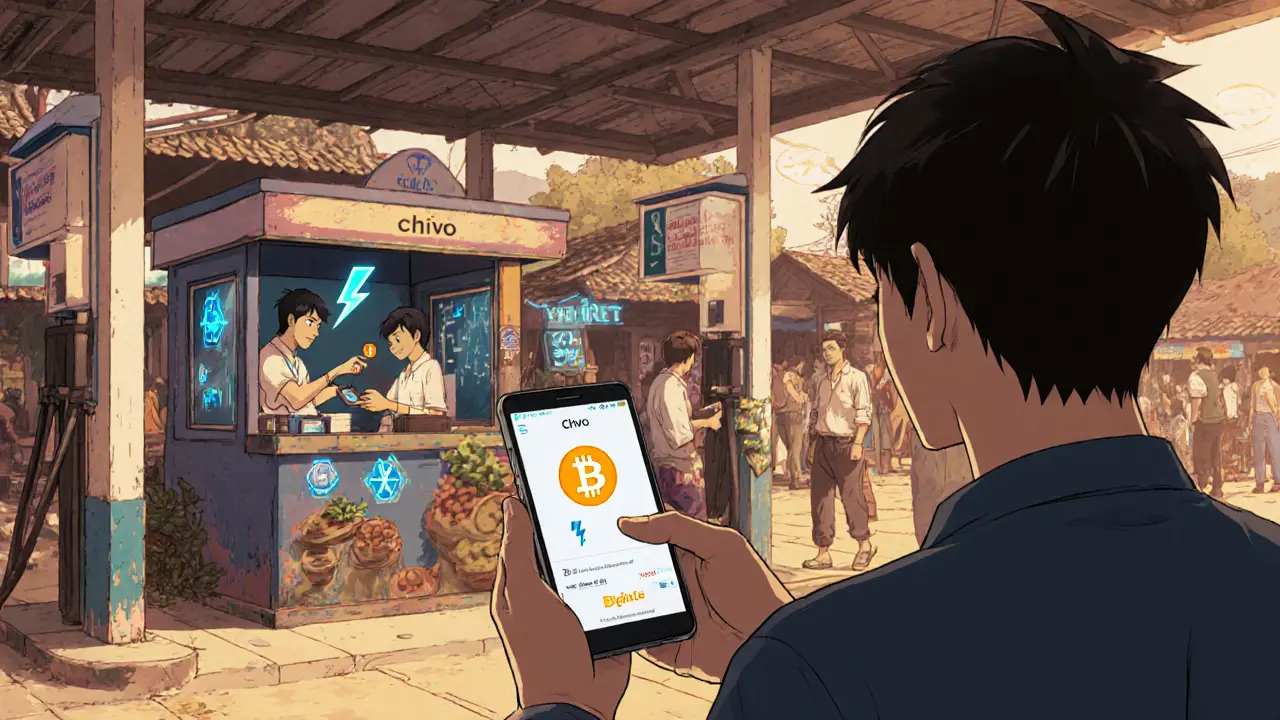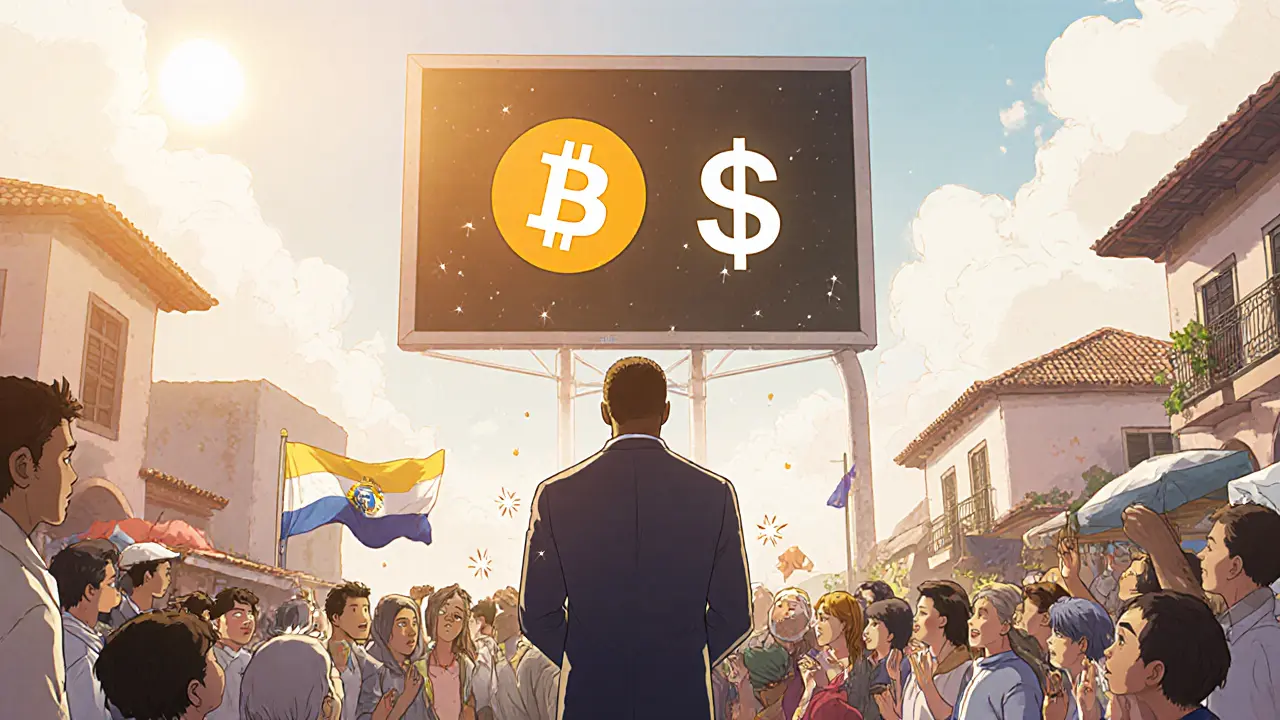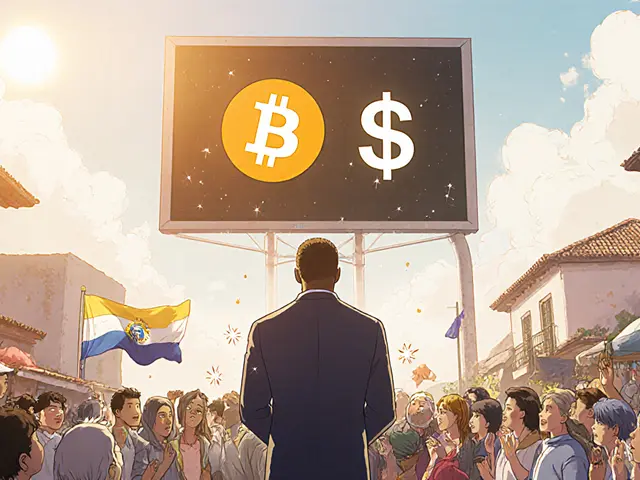Remittance Cost Calculator
Compare Remittance Costs
El Salvador's Bitcoin adoption promises to reduce remittance costs from traditional services. Calculate your potential savings.
Based on El Salvador's data, Bitcoin remittances average $12-$15 in savings per household annually.
Key Takeaways
- El Salvador became the first country to make Bitcoin legal tender in 2021, aiming to boost growth, cut remittance costs, and increase financial inclusion.
- The government introduced the Chivo wallet and a $150million reserve fund, but technical glitches and low user engagement limited real‑world use.
- Remittances, which account for over 20% of GDP, saw faster, cheaper transfers for early adopters, yet the overall economic benefit remains modest.
- Volatility, environmental concerns, and pressure from the International Monetary Fund have forced a partial rollback of the original crypto‑first policy.
- Lesson: a national cryptocurrency strategy needs solid infrastructure, clear risk management, and alignment with global financial institutions.
When President Nayib Bukele the 43‑year‑old leader who took office in 2019 announced that Bitcoin would sit beside the U.S.dollar as legal tender, the world watched a bold experiment unfold. The move promised to turn a $27billion economy burdened by debt, low growth, and a heavy reliance on remittances into a crypto‑pioneer. Fast‑forward to 2025, and the picture is a mix of early optimism, technical hurdles, and growing diplomatic pressure. Let’s break down how the policy works, what it has delivered so far, and where it stands today.
Legal Framework: The Bitcoin Law and Its Mechanics
The Bitcoin Law a short‑hand name for the legislation passed in September2021 made Bitcoin a mandatory means of payment for any goods or services, alongside the U.S.dollar. The law also allows taxes, fines, and salaries to be settled in Bitcoin, while obligating businesses to accept it unless they can prove a genuine inability to process crypto transactions.
To keep daily accounting stable, the government set up an automatic conversion system: when a transaction is logged in Bitcoin, a backend engine instantly swaps the amount into U.S.dollars at the market rate, preserving the dollar as the reference accounting currency. This dual‑currency model was meant to shield the economy from Bitcoin’s price swings while still delivering the promised speed and cost benefits.
Funding the rollout, the state earmarked US$150million as a reserve to buy Bitcoin and back the national crypto program. The money came from existing fiscal buffers and was stored in a government‑controlled cold wallet, later used to purchase Bitcoin on the open market.

Implementation on the Ground: The Chivo Wallet and Incentives
The centerpiece of the roll‑out is the Chivo wallet a mobile app created by the Salvadoran government to hold Bitcoin and facilitate everyday payments. Users who downloaded the app received a one‑time bonus of $30 in Bitcoin, plus a discount on gasoline purchases when they paid with the wallet. The government promoted the app through TV ads, social media, and even a national “Bitcoin day” celebration.
Within the first six months, about half of the country’s households had installed Chivo, but active usage lagged. According to a 2022 survey, 60% of those who received the free bonus never made a second transaction, and 20% still hadn’t spent any of their Bitcoin. The active user base skewed young, male, and already banked-precisely the demographic the policy hoped to bypass.
Technical hiccups compounded the problem. During the initial launch, users reported wallet crashes, delayed transaction confirmations, and confusing error messages when trying to set up recovery phrases. The government responded with a series of updates, but the early negative experience hardened a perception that crypto was “too hard” for the average Salvadoran.
Economic Motivations: Remittances, Financial Inclusion, and Investment
Three pillars underpinned the policy’s promise:
- Cheaper, faster remittances. More than 20% of GDP flows in from Salvadorans abroad, mainly the United States. Traditional money‑transfer services charge 5‑10% per transaction and take days to settle. Bitcoin, especially when used with the Lightning Network a layer‑2 protocol that makes Bitcoin payments near‑instant and low‑fee, could slash costs to under 1% and settle in seconds.
- Financial inclusion. Roughly 70% of the population lacked access to a formal bank account. A mobile‑first crypto solution promised to bring banking services-payments, savings, credit-directly to smartphones.
- Attracting foreign investment. By branding itself as a “crypto‑friendly hub,” El Salvador hoped to lure blockchain startups, mining operations, and venture capital.
Early data showed mixed results. A pilot study by the National Bureau of Economic Research observed that households using Bitcoin for remittances saved an average of $12 per year on fees-a noticeable but not transformative amount. Meanwhile, foreign direct investment linked directly to crypto remained modest, with only a handful of small‑scale mining firms setting up operations before environmental concerns and the country’s limited renewable energy capacity stalled larger projects.
Challenges and Criticisms: Volatility, Governance, and International Pushback
Bitcoin’s price swings proved to be the policy’s Achilles’ heel. Between 2021 and 2024, Bitcoin’s market price ranged from under $20,000 to more than $68,000. When the price dipped sharply in 2022, the government’s reserve fund was forced to sell Bitcoin to meet conversion obligations, draining part of the $150million buffer and raising concerns about fiscal sustainability.
The International Monetary Fund (IMF) the multilateral lender that monitors global economic stability repeatedly warned that the crypto experiment threatened macro‑economic stability. In 2024, the IMF conditioned a $1.4billion loan on El Salvador limiting Bitcoin’s role in public finance, demanding greater transparency and a cap on the amount of Bitcoin the state could hold.
Credit rating agencies followed suit, downgrading the country’s sovereign rating amid fears that a volatile asset could impair debt‑servicing capacity. Environmental NGOs also criticized the policy, noting that even with modest mining plans, Bitcoin’s energy footprint conflicted with El Salvador’s climate goals.
On the ground, the digital‑literacy gap hindered adoption. Rural communities, which make up a large share of the unbanked population, often lack reliable internet or smartphone access. Government‑run “crypto literacy” centers were established in major cities, but funding and staffing shortages limited their reach.

Current Status: Scaling Back but Not Abandoning Bitcoin
As of late 2025, Bitcoin remains legal tender, but the state has scaled back many of its earlier ambitions. The Chivo wallet still operates, and a small but growing niche of merchants-particularly in the tourism sector-accept Bitcoin directly. However, the government no longer promotes Bitcoin as a primary tool for tax collection, and the requirement for businesses to accept it has been softened to “reasonable effort.”
The IMF‑mandated concessions have forced El Salvador to adopt a hybrid approach: maintaining the crypto framework for innovation while anchoring core fiscal policy firmly to the U.S.dollar. The $150million reserve fund has been partially liquidated, and future purchases of Bitcoin will be subject to stricter parliamentary oversight.
Public sentiment appears divided. A 2024 Pew‑style poll found that 45% of Salvadorans view Bitcoin positively, citing the novelty and potential for faster remittances, while 40% see it as a risky experiment that benefits only a tech‑savvy minority. The remaining 15% are indifferent, focusing more on everyday concerns like electricity costs and employment.
Lessons Learned and the Road Ahead
El Salvador’s foray into national‑level cryptocurrency use offers a case study in both ambition and caution. Key takeaways for any country contemplating a similar path include:
- Infrastructure matters. Reliable internet, user‑friendly wallets, and 24/7 technical support are non‑negotiable.
- Risk management is essential. Volatility buffers, clear accounting rules, and contingency plans protect fiscal health.
- Stakeholder alignment reduces friction. Early dialogue with multilateral lenders, credit agencies, and local businesses can smooth implementation.
- Targeted education drives adoption. Tailored digital‑literacy programs for older adults and rural users boost inclusion.
Looking forward, El Salvador may become a laboratory for blending traditional and digital currencies rather than a pure crypto nation. Hybrid models-where central banks issue digital versions of fiat while still allowing private crypto-are gaining traction worldwide, and ElSalvador’s experience will likely inform those designs.
| Attribute | Bitcoin | U.S. Dollar |
|---|---|---|
| Volatility (30‑day std. dev.) | ~8% | ~0.5% |
| Average transaction cost | $0.50 (Lightning) / $5 (on‑chain) | $0.10 (ACH) / $2 (wire) |
| Settlement time | Seconds (Lightning) / 10‑30min (on‑chain) | 1‑3days (bank transfer) |
| Legal acceptance | Mandatory for goods/services (El Salvador) | Universal |
| Energy footprint (per transaction) | ~0.0001kWh (Lightning) | ~0.00005kWh (digital) |
Frequently Asked Questions
Why did El Salvador choose Bitcoin over other cryptocurrencies?
Bitcoin was selected because it is the most widely recognized and liquid digital asset, with a mature ecosystem and the ability to use the Lightning Network for fast, low‑cost payments, which matched the government’s goals of cheaper remittances and global visibility.
How does the Chivo wallet convert Bitcoin to dollars instantly?
When a user initiates a payment, the backend automatically routes the Bitcoin through a high‑liquidity exchange partner, swaps it at the prevailing market rate, and settles the merchant in U.S. dollars, all within seconds.
What impact has Bitcoin had on remittance fees?
Early adopters report fee reductions from about 7% to under 1% when using Bitcoin‑Lightning for cross‑border transfers, translating to roughly $12-$15 saved per household per year.
Is Bitcoin still legal tender in El Salvador?
Yes. The law remains in force, but enforcement has been softened; businesses are no longer forced to accept it if they lack the technical means, and the government no longer mandates tax payments exclusively in Bitcoin.
What are the main criticisms from the IMF?
The IMF argues that Bitcoin’s price volatility threatens debt sustainability, that the lack of transparent accounting creates fiscal risk, and that the policy undermines macro‑economic stability, leading to the conditional loan that forces El Salvador to curb Bitcoin’s role in public finance.







Write a comment
Your email address will be restricted to us